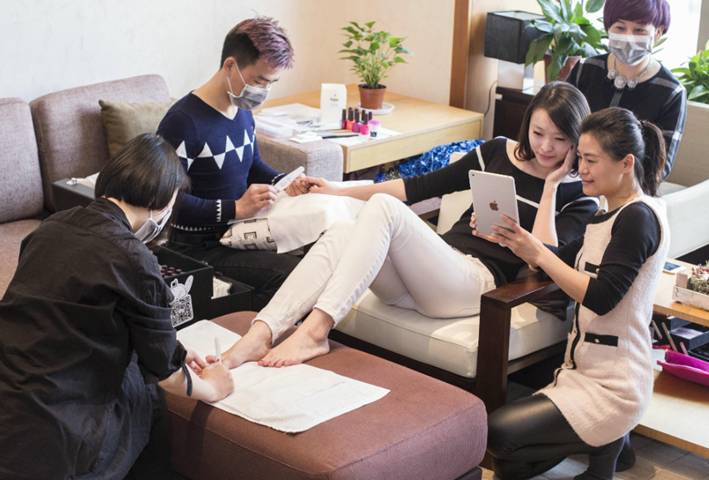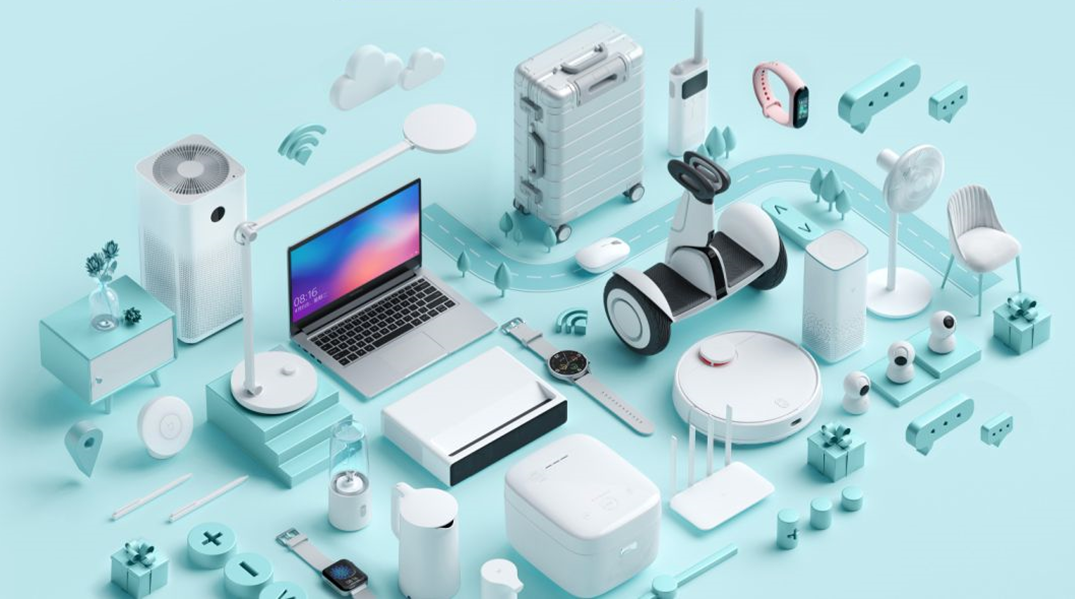The lazy economy is an economic phenomenon representing an upgrade in convenience-based consumption. There are three motivating factors of the lazy economy in China: people are becoming busier, technology is getting more advanced, and personal disposable income is increasing. The pursuit of an efficient, leisurely, and a high quality of life has led to the rapid development of the lazy economy. Hard work is the key to increasing productivity, but “laziness”, or the desire to work as little as possible, may be the driving force behind technological progress. The lazy economy and the stay-at-home economy in China go hand-in-hand, the latter being a notable trend boosted by the COVID-19 pandemic.
Chinese consumers are becoming more willing to spend money to save time. Take-out can save cooking time, housekeeping can save cleaning time, and online grocery shopping can save time in the vegetable market. The lazy economy in China is shaping industries, and even providing grounds for new tech to pop up. So we investigated which seven industries are driven by the lazy economy.
7 industries fueled by the lazy economy in China
- Food delivery
- Errand services
- Online grocery shopping
- Instant food
- Onsite services
- Smart home appliances
- Online entertainment
Food delivery in China
According to data from Analysys, the total number of take-out orders in 2020 in China has reached 17.12 billion, the transaction scale of the food delivery market has reached RMB 835.2 billion, and the number of takeaway consumers has approached 500 million, among which post-80s and post-90s have become the main force, consumers. The O2O food delivery market in China keeps growing, especially under the pandemic.
Meituan and Ele.me are the two giants of China’s food delivery market, occupying over 95% of the market.
The rapid development of the take-out industry makes “lazy” people happy to eat at home or the workplace. In the mid-to-high-end food delivery market, consumers are mainly busy office white-collar workers and corporate executives, accounting for 48.1% of the total users. The take-out platforms are trying to invest more in tier-3, 4, and 5 cities in China as they see rapid growth of food delivery services along with the increasing popularity of mobile Internets.
Errand services
The development of errands has benefited from the prevalence of the take-out industry. The initial errand services consisted of buying emergent daily necessities, delivering urgent documents, collecting items in the same city, and queuing in hospitals. Now the errands industry has entered the 2.0 era, extending to personalized services such as queuing in restaurants, shopping according to the client’s will list, delivering cargo, and even dog walking. Errand services are mostly used by young people and middle-aged people who are busy at work and have no time to do other things. In recent years, with the rapid development of mobile internet, errand services have been expanding and diversifying.
Most people use the errand service Apps to find people in the same city to help them quickly deal with the tedious things in daily life. For example, UU errand App focuses on intra-city errands, providing services such as the delivery of goods, documents, certificates, or flowers on behalf of users. It will automatically match the nearest errand delivery staff who will pick up the goods as soon as possible to the destination. In addition to the specialized errand running companies, express delivery enterprises like SF Express and JD Express and online food ordering platforms like Meituan are also joining in the ever-expanding market.

Online grocery shopping
Even if the supermarket is only one kilometer away, “lazy” people are willing to pay for grocery delivery services. Particularly, young people living in fast-paced first-tier cities tend to use new retail channels such as online grocery shopping more frequently to meet their daily needs.
A large number of competitors have poured into the fresh food shopping field, such as Freshippo, Miss Fresh, Yonghui, and JD Daojia.
According to a survey from Statista, most online grocery shopping users are 25 to 45 years old. The common characteristics of these people are 1. Time is more precious and convenience is more important. 2. Value the quality of the goods and services of platforms. Once they get used to the online grocery shopping model, the repurchase rate is extremely high. 3. These young people don’t like bargaining in offline markets, so they prefer direct pricing online platforms.
COVID-19 boosted the development of the online grocery industry. According to Statista, 84% of Chinese consumers increased their online shopping frequency during the pandemic situation. According to data from Intrado, China’s online grocery market will be US$ 219 Billion by the end of the year 2026, and the figure in 2020 was around US$ 62 Billion.

Instant food
Instant food is becoming more diversified and delicious, satisfying the concepts of “3R” products (i.e. Ready to cook, Ready to heat, and Ready to eat). In the past, instant noodles and compressed biscuits were the main types of instant food in China. However, with the development of the social economy, the family-based consumption pattern has changed to personal consumption and instant food has also become more diversified. Instant food includes instant noodles, instant meat, canned food, instant rice, quick-frozen food, etc. During the last two years, Mala Tang, self-heating hot pot, snail noodles, and Liangpi have become popular among young people, especially with the increase of single people. Instant food also enjoyed a sales surge during the COVID-19 and is expected to continue attracting Chinese consumers.
Compared with food delivery, instant food is relatively cheaper and faster. Suppliers are also trying to make their products more nutritious and attractive. The popular brand Ramen Talk has subverted the public’s understanding of instant noodles by providing restaurant-quality ingredients and nutrition.
According to CBN Data, online consumption of convenience and instant food has been expanding in the past three years and the market size reached RMB500 billion in 2020. The main consumers are singles, students, and office workers.
Onsite services
Onsite services bring offline services into the consumer’s home, including beauty and manicures, massages, cooking, and appliance requirements. With the rise of the lazy economy in China, there are more and more vertical O2O platforms that provide door-to-door services like 58.com, Jingdong, Meituan, and Dianping.
With the support of internet technology, on-site services have undoubtedly brought great convenience to people’s lives from housekeeping to sober cabbing. The onsite service industry has a huge market scale but with a low degree of standardization, which requires the O2O platforms to pay more attention to the overall planning and training.

Smart home appliances
More and more household appliances are becoming “smart”. For example, smart curtains that can automatically open, the Tmall Genie can automatically play music, coffee machines that can brew based on your daily schedule, dishwashers that automatically start, and autonomous vacuums which run on a schedule.
The intelligent, humanized, and comfortable home lives are inseparable from the human pursuit of efficiency. Especially for young people, being at home is a moment of leisure and entertainment, so they prefer to use smart home appliances to help them save time on trivial tasks.
The smart home is a system that integrates a variety of advanced technologies such as automatic controls, computer technology, and the Internet of Things. There is a lucrative market opportunity for the smart home industry in China and many manufacturers are experimenting with new ways of retailing like the offline smart home experience stores.
The complete smart home system includes lighting control, security, entertainment, and smart home devices, which people can control and monitor automatically via the Internet. According to Statista, the smart home market size in China reached over RMB170 billion in 2020 and is expected to amount to RMB217.5 billion in 2022. There is still a great growth potential as the market penetration rate is relatively low.

Online entertainment
The rise of the Internet economy has made way for stay-at-home entertainment with video games, films and animation dramas, social and dating applications. In addition to short videos, there are also many new niche entertainments emerging in the lazy economy, for example, online parties, online karaoke and disco dancing, and online fitness.
According to Statista, short video format has become the main driving force in China’s online pan-entertainment industry. The short video, online video, and mobile music account for 75.2%, 75.1%, and 62.7% respectively in terms of mobile user penetration.
What is driving the lazy economy?
The development of China’s lazy economy is inseparable from the progress of science and technology, which is made for more freedom, more efficiency, and more time to pursue passions and hobbies. Under the wave of the new economy, “lazy” people have been redefined by the commercial society. It is precisely for the desire to “be lazy” that will spur a variety of new industries and new products. Consumers use the time saved to entertain and socialize and put energy in more worthwhile places.
The lazy economy is also the result of the globalization of the division of labor. When society develops to the intellectual era, the social division of labor will become more obvious. It is also a very rational method to maximize the efficiency of the field in which people are good at and maximize the value of time.
Therefore, it seems that the lazy economy is not a regression caused by laziness, but a manifestation of social progress and productivity development, a leap forward from a thinking model to a business model.





